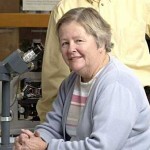
We have all heard about the science of Botany, but have you ever considered just how important it can be in solving your case? For instance; how plant cells from stomach contents can discredit an alibi, or how one seed in the shoe lace of a suspect can bring an unknown serial murderer to justice, or just exactly what plant DNA can tell us about our victims last location. Using plants in criminal investigations is an underused forensic science , this may be that there are few forensic botanist in the United States, but it is certainly a science we all need to be reintroduced to.
Forensic Botany
Forensic botany applies the knowledge and techniques of plant science to legal matters. Here, the term macroscopic plant remains is given to those plant materials not included within forensic palynology or microbiology. Research centered on spores, pollen, and certain microorganisms is well developed and will not be discussed here. For decades, these materials have been used successfully by archaeologists, geologists, anthropologists, and botanists to determine the cause of death for prehistoric or modern humans.
One of the early documented cases of forensic botany connected with macroscopic plant materials was the suicide death of Socrates. Plato described the death of his mentor as he attended the legally imposed suicide of Socrates. He was convicted of corrupting youth and disrespecting the state religion. Because Socrates was of high social standing, he was allowed to choose his own manner of death. He selected a deadly tea made from poison hemlock (Conium maculatum L.: Apiaceae). In Plato’s Phaedo (Plato and Gallop, 2009), we read of Socrates’ symptoms after he drank the fatal brew. This narration agrees with contemporary descriptions of poison hemlock’s effect on humans (Lewis and Elvin-Lewis, 1977). From that time to this, in most of the world’s societies the knowledge of plants’ effects on humans has appeared in courts (Simoons, 1998). Forensic botany became accredited in the courts of the United States in the trial of Bruno Hauptman who was accused of kidnapping and killing Charles and Anne M. Lindbergh’s baby son in 1932 (Graham, 1997, 2006). Arthur Koehler, a wood anatomist with the US Forest Service, matched the wood from the ladder used to get into the second floor Lindbergh nursery with wood from Hauptman’s attic. Hauptman was convicted of the crime and executed. The US Federal Bureau of Investigation called Koehler’s evidence ‘critical.’ This crime also resulted in kidnapping becoming a federal offense.
Collection of Evidence
The collection of plant material for use in criminal investigations differs from techniques taught in plant systematic courses. Forensic collections are assumed to be legal evidence. Such materials need to be collected, if possible, either by officers of law enforcement organizations or by a botanist in the presence of officers. Rules surrounding evidence are strict. When significant vegetation is collected, a chain of evidence must be established at once.
Notebook records of time and place and case numbers are required. It is wise, but not required, to assign your personal case number that will be linked to the number that will be used in court. This information must always remain attached to the evidence. Each person in possession of evidence must be clearly documented as the evidence passes among those involved in a case. Plant collections should be placed either in paper or cloth bags unless pollen analysis also is to be undertaken.
Bags need to be the smallest size to accommodate the material. Evidence can be stored in laboratories or evidence lockers for long periods of time, even years. Evidence rooms always are short of space, so economy of collection without minimizing the value of the specimens is essential. Plastic bags, glass jars, and tin cans are unacceptable for long-term storage because they encourage decay.
Download Full Paper Here: The Use of Macroscopic Plant Remains In Forensic Science
J H Bock, University of Colorado, Boulder, CO, USA ã 2013 Elsevier B.V.
Episode Guest
Jane Bock, PhD University of Colorado, Boulder, CO.
Fellow of the American Academy of Forensic Sciences. Member of Botanical Society of America.
Founding member of Necrosearch International.
80+ refereed publications, 3 books. Book in press, Forensic Plant Science – Academic Press. publication 2015 or 2016.


